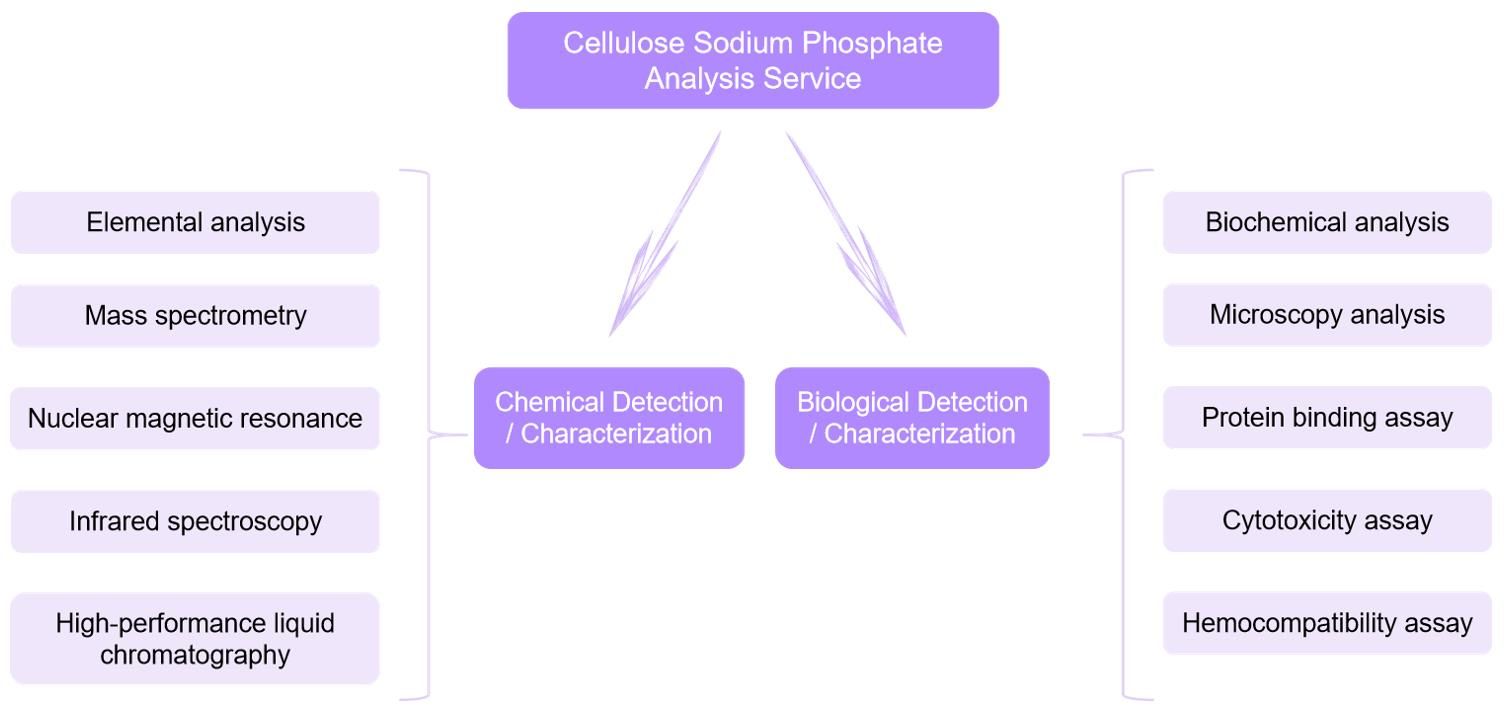


CSP, also known as sodium carboxymethyl cellulose and CM-cellulose is a water-soluble substance derived from cellulose and often used for its ability to inhibit hypercalcemia and hypercalciuria. CSP is prepared by phosphorylation of alpha-cellulose. CD BioGlyco provides comprehensive Pharmaceutical and Biological Analysis Services to ensure the effectiveness of drugs and biological. In particular, we have deep expertise and experience in the field of CSP analysis, allowing us to deeply analyze the important properties of this key material.
 Fig.1 CSP analysis service. (CD BioGlyco)
Fig.1 CSP analysis service. (CD BioGlyco)
Technology: Elemental analysis, Solid-state 13C and 31P NMR, Conductimetric titration analysis
Journal: Carbohydrate polymers
IF: 11.2
Published: 2020
Results: The authors utilized various phosphate salts with differing solubility constants (Ks) to enhance modification efficiency. They examined the phosphorylated cellulose pulps via elemental analysis, solid-state 13C and 31p NMR, and conductimetric titration method. There was no discernible effect from Ks, but a significant counterion effect was detected. The authors also scrutinized the impact of various factors such as pH, cellulose concentration, temperature, and urea content on phosphorylation efficiency. To conclude, they assessed the chemical functionalization and phosphorus penetration into the cellulose fibers using X-ray photoelectron spectroscopy (XPS), scanning electron microscopy with energy dispersive X-ray spectroscopy (SEM-EDX), time-of-flight secondary ion mass spectrometry (ToF-SIMS), and solid-state NMR.
Here are some of the results shown in this article:
 Fig.2 Evaluation of phosphorus position on the cellulose fibers. (Rol, et al., 2020)
Fig.2 Evaluation of phosphorus position on the cellulose fibers. (Rol, et al., 2020)
CSP has anti-urinary stone activity and anticoagulant effects. It also has good biocompatibility and degradability.
The indicators tested by our CSP analysis service include but are not limited to its purity, chemical structure, molecular weight distribution, solubility, stability, and biocompatibility. By accurately measuring these indicators, we comprehensively evaluate the quality and performance of CSP and provide clients with accurate and reliable data support.
CD Bioglyco provides a full range of Pharmaceutical Analysis Services, including quality control, ingredient analysis, and efficacy evaluation. Importantly, our CSP analysis service provides a comprehensive analysis of CSPs and their performance across a variety of applications. In addition, we offer a variety of tests for cellulose sodium phosphate for oral suspensions, including the determination of calcium-binding capacity, free phosphate, and inorganically bound phosphate. Please feel free to contact us if you have any questions or needs about our CSP analysis services.
Reference
